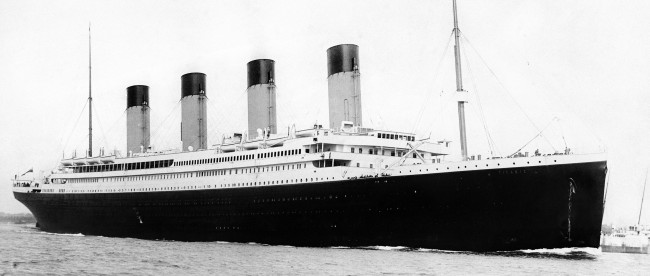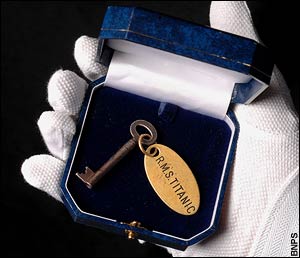Could This Key Have Saved the Titanic?

You already know the story of RMS Titanic. On April 10, 1912, it set out on its maiden voyage from Southampton, UK to New York City, but late on the evening of April 14th, it struck an iceberg. A few hours later, the ship was on its way to the bottom of the Atlantic. The captain, Edward Smith, went down with the ship, as did most of the crew. All told, approximately 1,500 of the 2,244 passengers and crew died in the accident.
Second Officer David Blair was not one of them.
In Blair’s defense, that’s because he wasn’t on the boat, through no fault of his own. During the Titanic’s test voyages, Blair served the ship well — well enough to earn a permanent position with the crew. But White Star Line, the owner of the Titanic and some other ships of its class, had a surplus of officers. The RMS Olympic, considered one of the Titanic’s two “sister ships,” was idle, so its Chief Officer was put on the Titanic. The man originally intended to be the Titanic’s Chief Officer became the First Officer, the would-be First Officer became the Second Officer, and David Blair was left home, disappointed.
A few days later, the Titanic went out to sea, never to return. But, after, David Blair realized that he had taken some of the boat with him — a key, seen below.

That key, according to the Telegraph (which is also the source of the image above), was the only one to the lock in the ship’s crow’s nest. The men stationed in the crow’s nest as the Titanic approached the deadly iceberg, therefore, didn’t have access to the contents of the locker. Two of the survivors of the wreck were lookouts and one, Frederick Fleet, was the man who first spied the hazard floating ahead. Per Fleet’s Wikipedia entry, Fleet blamed a lack of binoculars resulted in him noticing the iceberg too late: “Fleet testified at the inquiries that if he had been issued binoculars, he would have seen the iceberg sooner, because it was a blue iceberg in calm seas on a moonless night.”
And, chances are, there were binoculars in that locker.
We don’t know for sure, of course — that locker is somewhere on the bottom of the Atlantic Ocean, unlikely ever to be seen again; and Blair never spoke about what was in the locker or where his binoculars went. However, it may not have been the key that doomed the Titanic, despite Fleet’s testimony. Per the National Museums of Northern Ireland (and this is a sentiment shared by many other experts who studied the history and fate of the Titanic), “it is likely that binoculars would not have helped to save Titanic as they are of limited use in the conditions found on the night of 14th April 1912.”
Blair’s daughter eventually donated the key to the International Sailors Society, and it was auctioned off in 2007, fetching £90,000 (about $130,000). According to the BBC, the proceeds of the auction were used to set up scholarships in Blair’s name.
Bonus Fact: On May 14, 1912 — a month to the date of the Titanic’s crash into the iceberg — American theaters debuted a 10-minute silent film titled “Saved from the Titanic” starting an actress named Dorothy Gibson. For Gibson, the film wasn’t just a role — it was a memoir of sorts. Gibson was a survivor of the Titanic and, according to Wikipedia, reliving the tragedy soon after experiencing for real was too much for her to handle: ” she suffered a mental breakdown after completing it, apparently due to the mental strain that it caused her.” It was the last of her two dozen films.
Take the Quiz!: How well do you know the details around the Titanic accident? Let’s find out.
From the Archives: Titanic’s Star Wars: The movie “Titanic” had a problem — above.
Related: “Last Dinner On the Titanic: Menus and Recipes from the Great Liner,” a cookbook. 4.8 stars on 69 reviews.
